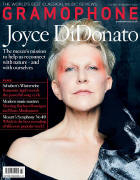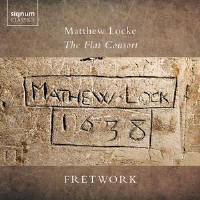Texte paru dans: / Appeared in: |
|
|
Outil de traduction |
|
|
Reviewer:
Charlotte Gardner Fretwork, joined by David Miller on archlute and theorbo and Silas Wollston on harpsichord, paint as beguilingly colourful a picture of the man himself as they have of his music. Containing Locke’s most virtuoso writing, The Flat Consort suites consist of ‘fantazias’ followed by dances. A distinctive feature is their varied instrumentation, the first two being for treble, tenor and bass viols, with any continuo following the bass viol; the other three being for treble, plus two bass viols alternating between playing the bass and middle line, with a separate continuo part providing bass-line continuity. Evidence of Locke’s exposure to the French style comes via the presence of courants, although what he produced would have been significantly more virtuoso than French viol-writing of the time. This impression of virtuosity is further emphasised by Fretwork’s turning for their ornamentation – or ‘gracing’ – to the table of graces that Locke’s friend, the viol virtuoso and composer Christopher Simpson, asked the composer Charles Coleman to compile for The Division Violist (pubd 1659). Divided into the ‘Smooth Graces’ and the ‘Shaked Graces’, this table has been reproduced in the booklet notes – great news for anyone wanting to spot the various beats, backfalls and double relishes being employed. Or, frankly, you could just sit back and enjoy. As Boothby points out, Locke’s music may be virtuoso but its counterpoint is exceptionally refined and delicate, and this in turn has been realised with some equally refined and delicate playing. Listen, for instance, to the feather-light Jigg rounding off the Suite No 2 in B flat, and in particular the way these musicians turn on a dime at the end for a surprise smooth, slow conclusion. Indeed, the delicious way in which Locke’s fantazias – unlike those of Jenkins or Lawes – present a cornucopia of switches in tempo or affect is matched by Fretwork’s agility in moving from one colour and affect to the next, such as the sudden switch up to treble colour in the second Fantazia of Suite No 3 in D minor. For some particularly gorgeously nuanced shakes, meanwhile, head to the third Fantazia of the Duo for two bass viols in C. Those familiar with Phantasm’s Locke programme, which features the first two Flat Consort suites together with the six Consort of Four Parts suites, will notice Fretwork’s rather more burnished, stringy and closely captured sound. I prefer this, but of course that’s personal taste. |
|




